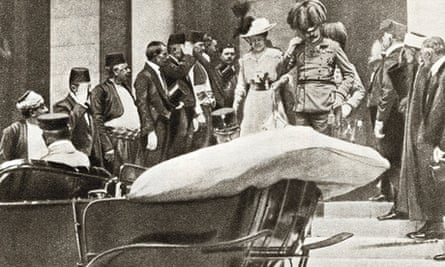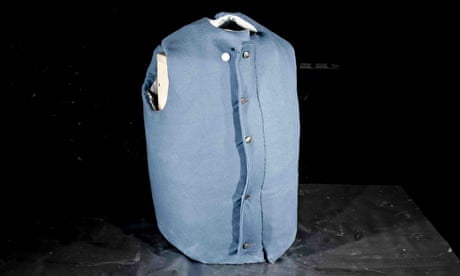A century ago, a silk vest could have saved the world from toppling into the war in which millions of soldiers and civilians would die.
Tests at the Royal Armouries are expected to prove that an allegedly bulletproof silk vest, believed to have been owned by Archduke Franz Ferdinand, could indeed have stopped the shot fired by the Serbian nationalist Gavrilo Princip.
At the time of the assassination, at near point-blank range by a teenage gunman, described later as "the shot heard around the world", it was reported that Franz Ferdinand owned but was not wearing body armour.
Polish inventor Casimir Zeglen created the vests, which were made of light but strong layers of organic material, particularly silk. By the 1900s they were sold across the world, and had been bought by many heads of state. Franz Ferdinand was well aware of the risk of an attempt on his life – his uncle had survived an attempt a few years earlier – and had been warned that his visit was likely to make unrest in Sarajevo worse. Exactly a month after his death, on 28 July, Austria-Hungary declared war on Serbia, allies on both sides were drawn in by 4 August, and the world was changed forever.
The Royal Armouries has had replicas of the vests made to the original patent specification, and is testing them with ammunition and weapons similar to the 1910 Browning semi-automatic pistol fired on 28 June 1914 by Princip.
The tests continue but have already established that the silk does have bullet-stopping capabilities.
Lisa Traynor, first world war researcher at the Armouries, said that her interest in the story began when she came upon a Browning identical to the one used by Princip.
"Upon examining its serial number, I realised it was only 516 away from the actual pistol used in the assassination and would probably have been manufactured around the same time.
"This made me think about the 'what if scenario' surrounding the death of the archduke. If he hadn't been killed, would the war have been delayed?
"After months of independent research and with the assistance of international academics on the subject, I discovered that it was entirely possible the archduke may have owned a piece of body armour. Our first world war team thought it would be interesting to test the theory of silk body armour against the Browning Model 1910, to understand the ballistic capabilities of 19th-century body armour against 20th-century firepower.
"I don't want to pre-empt the next round of tests. However, I can report that silk does have bullet-stopping capabilities. So this research could result in very exciting results."
The replicas and the results of the tests will be displayed in Bullets, Blades and Battle Bowlers, an exhibition opening at the museum in Leeds in September.

On 28 June the assassination was a botched affair. Princip was a slight and sickly teenager, a member of the Young Bosnia movement that was campaigning for Serbian independence from Austria-Hungary. Archduke Franz Ferdinand and his wife Sophie came to Sarajevo on a civic visit, and toured the streets in an open-top car despite the known risks. Several of the conspirators staking out the route lost their nerve, but one threw a grenade that missed their car, injuring others in the motorcade and several spectators. Later, when the couple was heading towards the hospital to visit those injured in the first incident, their chauffeur took a wrong turn, tried to reverse, but stalled the car just outside a cafe where Princip was standing. He fired twice into the car, hitting Ferdinand in the neck and Sophie in the abdomen. Both died within the hour.
Princip was arrested on the spot, having failed to commit suicide with a cyanide capsule that was out of date. He died of tuberculosis in an Austrian prison in 1918, aged just 23.
The gun, and a bomb also used by the Serbian anarchists, part of the police evidence collected after the assassination, survive in the collection of the Museum of Military History in Vienna.

Comments (…)
Sign in or create your Guardian account to join the discussion